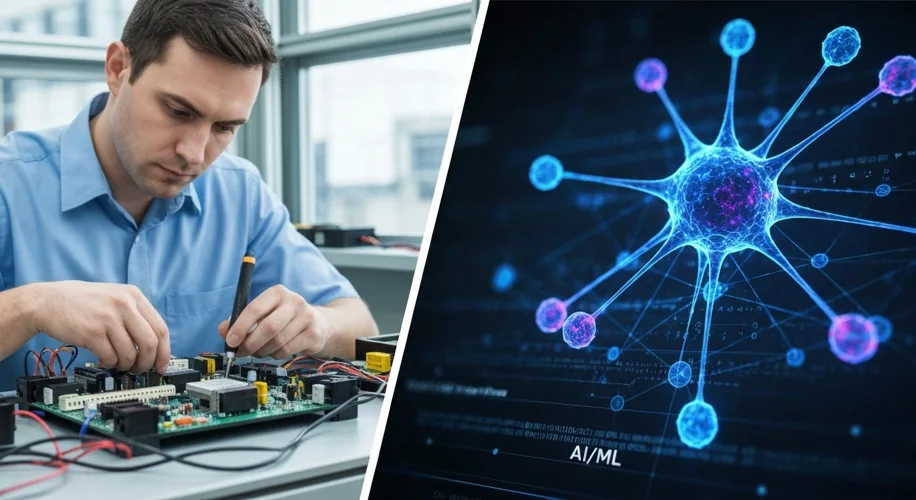So, you’re an Electrical Engineer (EE) with a solid background in embedded systems, and you’re eyeing the world of AI and Machine Learning (ML). That’s awesome! Lots of EEs are making this transition, and honestly, your skills are super valuable in this space.
Let’s break down how your EE expertise fits into AI/ML, especially in research and development, and what you might want to focus on.
Why Your EE Skills Matter in AI/ML
Think about it: AI/ML models, especially deep learning ones, often need serious computational power. Where does that power come from? Hardware! And who understands hardware better than an EE?
- Low-Level Hardware & Software: This is your playground. AI/ML isn’t just about the algorithms; it’s about making them run efficiently on actual silicon. You know embedded systems, microcontrollers, FPGAs, and maybe even ASICs. This means you understand how to optimize code for specific hardware, manage memory, and deal with power constraints – all critical for deploying AI models, especially at the edge (think smart cameras, autonomous vehicles, or even your smart thermostat).
- Performance Optimization: You’re probably already good at squeezing every drop of performance out of hardware. This translates directly to making AI models faster and more energy-efficient. Imagine optimizing a neural network to run on a tiny microcontroller without draining the battery in minutes. That’s where your embedded systems magic comes in.
- Hardware Acceleration: Many AI tasks are massively parallel. You know how to design or work with hardware that can handle this, like using GPUs or specialized AI accelerators. Understanding the interface between software and this hardware is key.
What Skills to Focus On?
While your EE foundation is strong, there are a few areas to lean into:
- Machine Learning Fundamentals: You don’t need to be a PhD in theoretical mathematics, but understanding the core concepts of ML is essential. Start with supervised learning (regression, classification), unsupervised learning (clustering), and deep learning (neural networks, CNNs, RNNs).
- Programming Languages: Python is king in AI/ML for its libraries (TensorFlow, PyTorch, scikit-learn). But don’t ditch C/C++! They are still crucial for embedded AI, high-performance computing, and low-level optimizations.
- Data Science Basics: You’ll be working with data. Understanding data preprocessing, feature engineering, and evaluation metrics is important.
- Cloud Platforms (Optional but helpful): Familiarity with cloud services like AWS, Google Cloud, or Azure can be beneficial for training larger models or deploying scalable solutions.
- Specific AI Hardware: Get familiar with platforms like NVIDIA Jetson, Google Coral, or Raspberry Pi for edge AI projects. Understanding their architecture and how to optimize for them will be a huge plus.
How to Make the Switch?
- Personal Projects: Build something! Take an existing AI model and try to deploy it on an embedded system you have. This is the best way to learn and demonstrate your skills.
- Online Courses: Platforms like Coursera, edX, Udacity, and fast.ai offer excellent courses on AI/ML, often with practical projects.
- Open Source: Contribute to AI/ML projects, especially those related to hardware acceleration or embedded ML. Your embedded systems experience is unique here.
- Networking: Connect with people in the AI/ML field, especially those with hardware backgrounds. LinkedIn is your friend!
Your EE background gives you a unique advantage in the practical, real-world application of AI/ML. You’re not just building models; you’re building the systems that run them. Go get ‘em!

